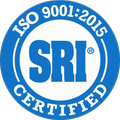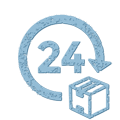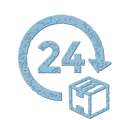NOTE: Invar® is commonly known as Invar®36
Working and Forming
Invar® may be worked using any conventional working method. Annealed material, that is material with an RB hardness of less than Rockwell B 70, is desirable for material involving deep drawing, hydro-forming or spinning. For blanking, material between 1/4 at 3/4 hard will usually present a cleaner cut. Invar® may be chemically etched. For operation where there is a large quantity of machining. Free Cutting Invar® is available in round rod.
Heat Treatment for Invar®
Invar® can be heat treated using one of the following methods. Heating and cooling rates shall be controlled to prevent damage to the parts (cracking, warpage, atbp)
Annealing Method 1
Heat parts to 1525°F +- 25°F and hold at temperature one-half hour per inch of thickness, then furnace cool at a rate not to exceed 200°F per hour to 600°F. No additional machining should be performed on these parts
Annealing Method 2
- Rough Machine
- Heat parts to 1525°F +- 25°F and hold at temperature one-half hour per inch of thickness, then furnace cool at a rate not to exceed 200°F per hour to 600°F. Still air cool is acceptable below 600°F
- Heat Parts for one hour at 600″F +- 20°F followed by air cooling
- Heat parts for 48 hours at 205°F followed by air cooling
- Finish Machine.
Annealing Method 3
Annealing plus water quench and stabilization method
- Rough Machine
- Heat parts to 1525°F +- 25°F and hold at temperature one-half hour per inch of thickness, then water quench
- Semi finish machine
- Heat Parts for one hour at 600″F +- 20°F followed by air cooling
- Heat parts for 48 hours at 205°F followed by air cooling
- Finish Machine
Hinang
Conventional welding methods can be used with Invar. Invar filler rod is recommended for those welds requiring filler rod.
Brazing
First anneal the material as above. Avoid over stressing joints during brazing. Use silver and zinc free brazes for brazing Invar®.
Heat Treatment
Because of its affect on the actual structure of the material, there is a distinction made between heat treating the material to facilitate fabrication and heat treating the material to insure optimum conditions for glass sealing, plating, or brazing.
Stress Relief Annealing
To relieve stress and work hardening of parts at intermediate stages o fabrication. It is intended particularly for drawing, forming and spinning operations.
- Wash and degrease parts
- Anneal in atmosphere controlled furnace. Atmosphere may be wet or dry hydrogen, dissociated ammonia, cracked gas or similar neutral atmosphere.
- Annealing temperature is not critical; gayunpaman, high temperatures (greater than 900°C) or extended time periods (longer than 60 minutes) should be avoided because such treatments promote grain growth.
Typical cycle – 850°C for 30 minutes. - Parts should be held at temperature for the indicated time and then furnace cooled to less than 175°C to avoid oxidation and/or thermal shock (which may cause distortion)
Heat Treatment for Oxidation
- Make sure that proper methods are used to clean, degrease and bright dip parts
- Oxidation – Heat treat in an electric air furnace to 850°C to 900°C until parts are cherry red (dull red heat). The length of heat cycle is approximately 3 minutes, but due to differences n humidity and furnaces, the proper cycle has to be varied. Then reduce heat approximately 10°C per minute. When parts are cooled, oxide will be formed. The oxide may appear from light gray to black in color. Black is normally considered to be over-oxidation and is not necessarily desirable for a good glass to metal seal
Invar® & Super Invar® are registered trademarks of CRS Holding, a subsidiary of Carpenter Technologies – Makipag-ugnay sa Eagle Alloys, your premierInvar® 36 suppliers, ngayon!
Super – Invar®
Invar® (36% NI-Balanse bakal) Alloy ay ang mataas na temporal na metal ng pagpipilian para sa mababang pagpapalawak application para sa taon. "Super-Invar®" (31% NI-5% Co-Balance Bakal) ay natagpuan ng ilang mga pabor dahil ito ay may isang malapit na zero kape ng thermal expansion sa isang limitadong temperatura hanay. Ang kapaki-pakinabang na hanay ng "Super Invar®" ay limitado sa pagitan ng -32° sa + 275°C. because the material begins to transform from Austenite to Martinsite at temperature below-32°F
The C.T.E crosses over the zero frequently, each lot of heat behaves a little differently, but these results are typical for material between 0°F and 200°F
Formability
Super Invar® is easily formed, deep drawn and fabricated.
Weldability
Super Invar is welded using a special Super Invar weld wire, and a variety of other high nickel rods and wires
Machinability
Super Invar® properties make it so the metal is tough and gummy, not hard or abrasive. Tools tend to plow instead of cut, resulting in long stringy “chips.” Tools must be sharp, feed and speed low to avoid heat and distortion. The use of a coolant is recommended for all machining operations. Machinability similar to Kovar®, Stainless 300 series, and Monel Alloys has been reported. Ni-Fe Alloys generally have a tendency to develop a surface scale during hot working that penetrates the surface. For this reason machining allowances must be increased to eliminate the deep surface oxide. The initial cut is frequently the most difficult.
Invar® & Super Invar® are registered trademarks of CRS Holding, a subsidiary of Carpenter Technologies






